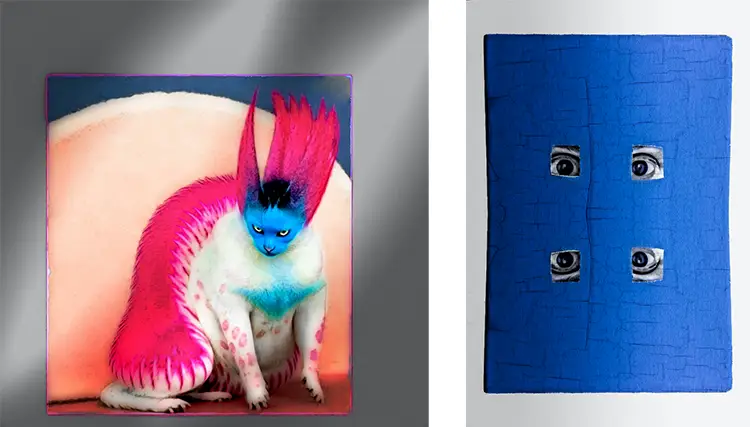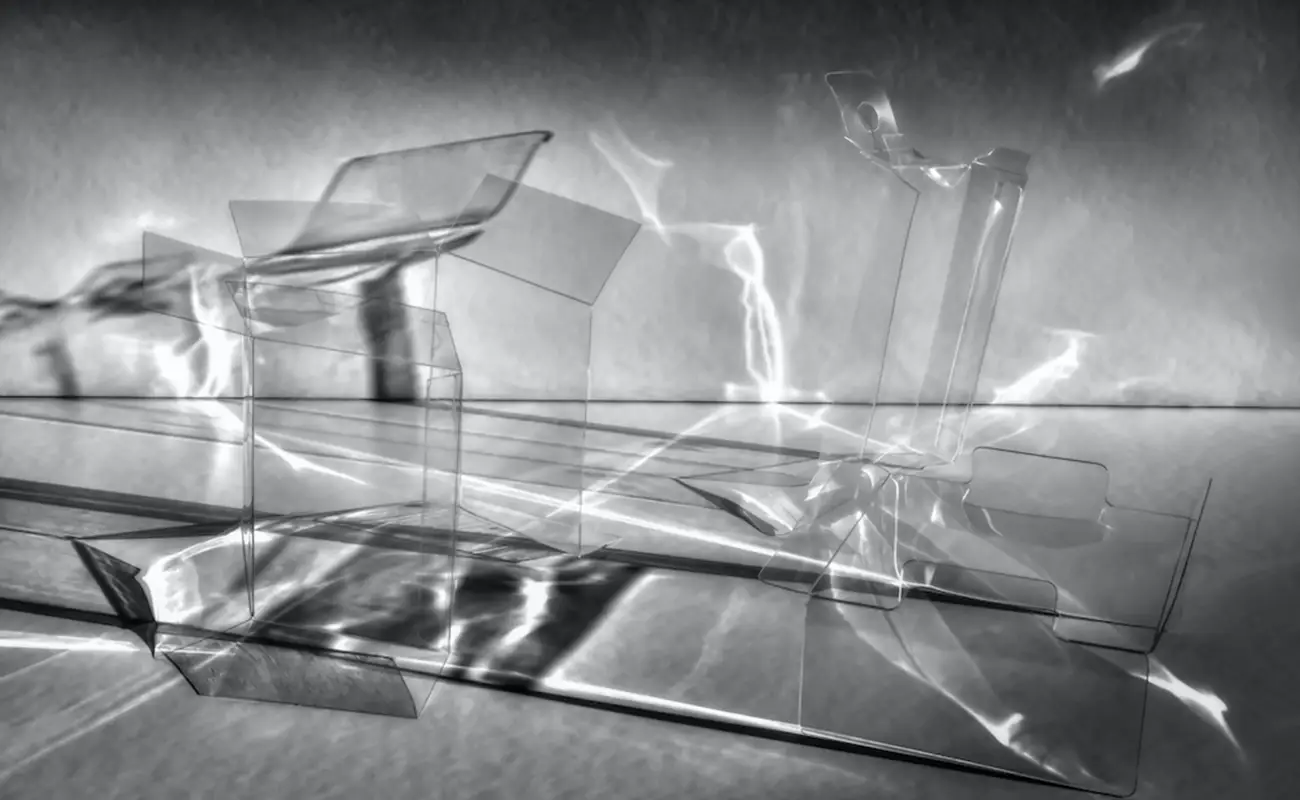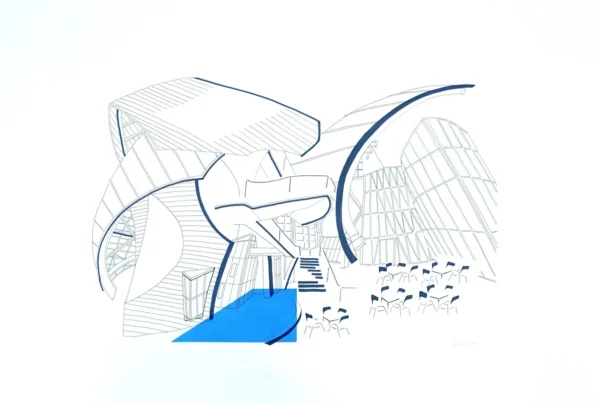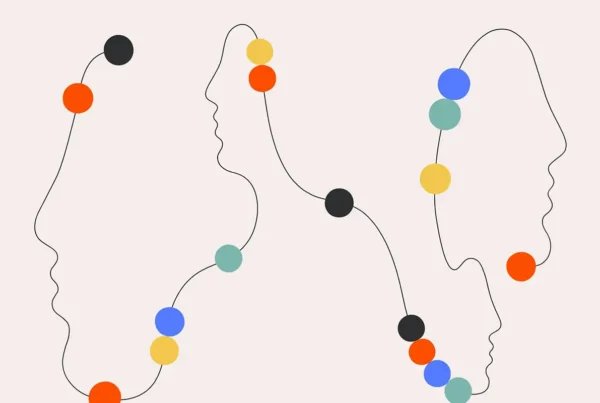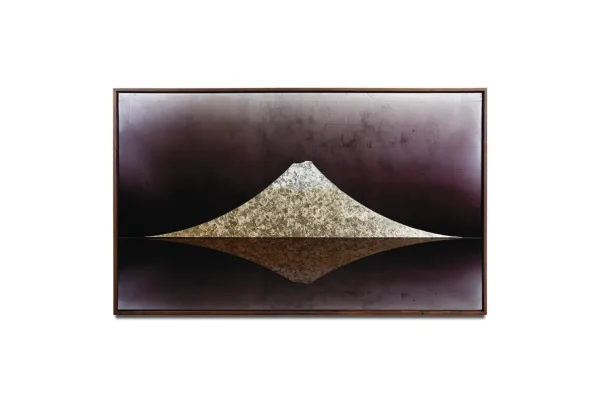“Art gave meaning and saved my life psychologically and physically. I remain and will remain faithful to my art until the end.”
From the Shadows of Rome to the Echoes of Light
Born in 1964 in Rome, Daniela Bombeli emerged from a humble background, shaped as much by the gritty suburbs of the Italian capital as by its cultural grandeur. Raised in a home where her father, a laborer with an insatiable curiosity for art, history, and music, encouraged her to immerse herself in museums and concert halls, Bombeli’s early years unfolded in sharp contrast to the decay of her surroundings. Art was never an escape—it was a sanctuary. In her own words, it was a realm where she felt “pleased and safe,” far removed from the anxiety and fear that marked her childhood. The city’s inexhaustible artistic treasures nourished a vision that would evolve into an uncompromising aesthetic defined by contradiction, complexity, and raw emotional clarity.
During adolescence, music became her second language. She picked up the guitar and performed in amateur bands, gradually expanding her sonic curiosity into all genres—from the intricate structures of classical compositions to the unpredictability of experimental and traditional forms. To support this passion, Bombeli pursued a practical path, becoming an electrician and later fusing her twin loves—technology and sound—into a career as a sound engineer. Her professional life from the early ’90s through 2015 included more than 200 recording projects spanning music, film, and television. From collaborating with opera icons like Montserrat Caballé to avant-garde visionaries such as Hans-Joachim Roedelius, Bombeli stood at the convergence of tradition and innovation, laying the groundwork for the visual artistry that would soon take center stage.
It wasn’t until 2000 that Bombeli ventured into the world of visual art, initially through photography. Her embrace of digital tools and, later, artificial intelligence marked a bold evolution in her practice. Rather than shying away from new mediums, she explored them with a voracious curiosity. Since 2022, her creative focus has been entirely digital, merging original AI-generated styles with intricate photo and video editing techniques. Her workspace, minimal and filled with natural light, reflects her disciplined approach—just a computer, a table, and uninterrupted hours accompanied by music. In this simplicity, she finds both concentration and inspiration, allowing each project to be driven solely by creative impulse.

Daniela Bombeli: The Jumble of Being and Becoming
Daniela Bombeli’s distinctive visual language, which she calls “The JumbleStyle,” arises from a philosophical framework that celebrates contradiction, chaos, and individuality. Rejecting linear narratives and fixed aesthetic categories, her work embodies a belief that disorder is not the antithesis of beauty but its very foundation. “The Jumble” is not a technique but an ethos—a fusion of disparate elements that form a cohesive whole through tension, not harmony. It acknowledges the primordial chaos from which both the cosmos and consciousness emerge, positing that individual perception is both the starting point and the culmination of all artistic expression. Bombeli sees each artwork as a collision between opposing forces, producing compositions where the grotesque and the sublime often coexist, not in opposition but in synthesis.
Her approach is unrestricted in both concept and method. No tool or medium is off-limits, and techniques are freely manipulated—even deconstructed or “violated”—in service of the final image. This fluidity allows her to create what she describes as a continuous “kaleidoscopic game,” where no two works follow the same logic or aesthetic path. Each piece is its own organism, a singular result of the artist’s emotional and intellectual impulses at that moment. This radical adaptability extends to her tone and thematic content: irony, lyricism, cynicism, and tenderness can all appear within the same visual sentence. By likening her process to “Nouvelle Cousine,” Bombeli emphasizes the richness of her conceptual palette, where artistic ingredients are freely combined in unconventional yet deeply evocative ways.
What makes Bombeli’s style particularly compelling is its refusal to adhere to recurring themes or preferred subjects. For her, the act of creation itself is the only constant. Whether the image is soft or savage, abstract or figurative, ironic or tragic, the through-line is always the artist’s refusal to filter reality into digestible tropes. This stylistic anarchy is never arbitrary; it is rooted in a rigorous internal logic that prioritizes honesty over appeal. Her work insists on the beauty of contradiction—on lilies blooming from mud, on scars transfiguring into icons. At its core, “The Jumble” demands that we confront discomfort without flinching and embrace the fractured beauty of our existence.

The Sacred and the Chaotic: A Cinematic Symphony
Among Bombeli’s prolific output, the photograph titled Koyaanisqatsi (2019) stands as a pivotal work—technically refined and philosophically potent. Inspired by the 1983 film of the same name by Godfrey Reggio, with its iconic score by Philip Glass, the image is more than a tribute; it is an act of synthesis. Bombeli channels the film’s juxtaposition of nature and industry, of ritual and decay, into a still image that carries the same haunting, almost spiritual weight. The photograph captures a fleeting sense of balance amid disorder, a visual hymn to entropy, mirroring the emotional resonance she first felt upon watching the film. For her, Koyaanisqatsi offered not only a new cinematic language but a blueprint for constructing visual meaning without relying on narrative.
The photo’s impact lies in its atmospheric density. Working exclusively with natural light and highly targeted digital editing, Bombeli crafts a visual experience that breathes with the same intensity as music. She considers the piece a successful convergence of her influences—an image where the spectral elegance of Francesca Woodman meets the brutal serenity of Brancusi and the layered abstraction of Zdzisław Beksiński. In Koyaanisqatsi, every compositional choice is purposeful: the diffusion of light, the intentional grain, the compositional asymmetry. These elements coalesce into an image that evokes a mysticism grounded not in fantasy but in the heightened awareness of everyday collapse and creation.
Recognition for this piece has been significant, both publicly and personally. It remains one of her most awarded works, praised for achieving a rare equilibrium between aesthetic form and conceptual depth. More than just a career milestone, Koyaanisqatsi functions as a manifesto in image form—containing within its frame Bombeli’s core beliefs about the artist’s duty to bear witness to the beautiful chaos of life. It is a culmination of decades spent tuning the eye to irregularity, trusting dissonance, and finding music in silence. For Bombeli, this photo represents not the pinnacle but the opening note of a lifelong symphony dedicated to interpreting a universe forever on the brink of disorder.

Daniela Bombeli: Tarot of the Self, Future in Flux
Bombeli’s artistic trajectory remains defiantly uncharted, refusing to settle into predictability. In January 2025, she realized a long-standing ambition with the completion of her original Tarot deck, The Italian Mantiche. This project is a natural extension of her artistic worldview—one that seeks connections between mysticism, archetype, and individuality. The Tarot, with its symbolic lexicon and rich visual language, provided the perfect vessel for Bombeli to explore collective and personal mythologies. Each card reflects her signature stylistic blend: chaotic yet deliberate, darkly humorous yet sincere, intuitive yet intellectually structured. The deck serves not only as a tool for divination but as a gallery of inner landscapes, filtered through her vision.
Creating the Tarot required Bombeli to navigate a synthesis of history and innovation. Her fascination with illuminated medieval manuscripts and her grounding in digital artistry converge within these 49 cards. Every image is charged with symbolic complexity, layered with allusions to art history, esoteric tradition, and contemporary visual culture. It is an object that asks to be both studied and felt, an instrument that continues her mission of making the mystical tangible. While rooted in a centuries-old practice, her approach imbues the Tarot with a distinctly modern pulse, ensuring its relevance in a digital era hungry for spiritual engagement.
Looking ahead, Bombeli remains open to whatever new form her creativity demands. She jokes that sculpture or designing Italian gardens could be her next venture—but the sentiment is earnest. Her practice has always been defined by openness to transformation and resistance to stagnation. Whether she’s working with algorithms or light, pixels or petals, Bombeli’s allegiance is not to a medium but to a principle: the unrelenting pursuit of truth through beauty, humor, and contradiction. Her artistic journey is not a straight path but a spiral, looping through chaos with eyes wide open.
